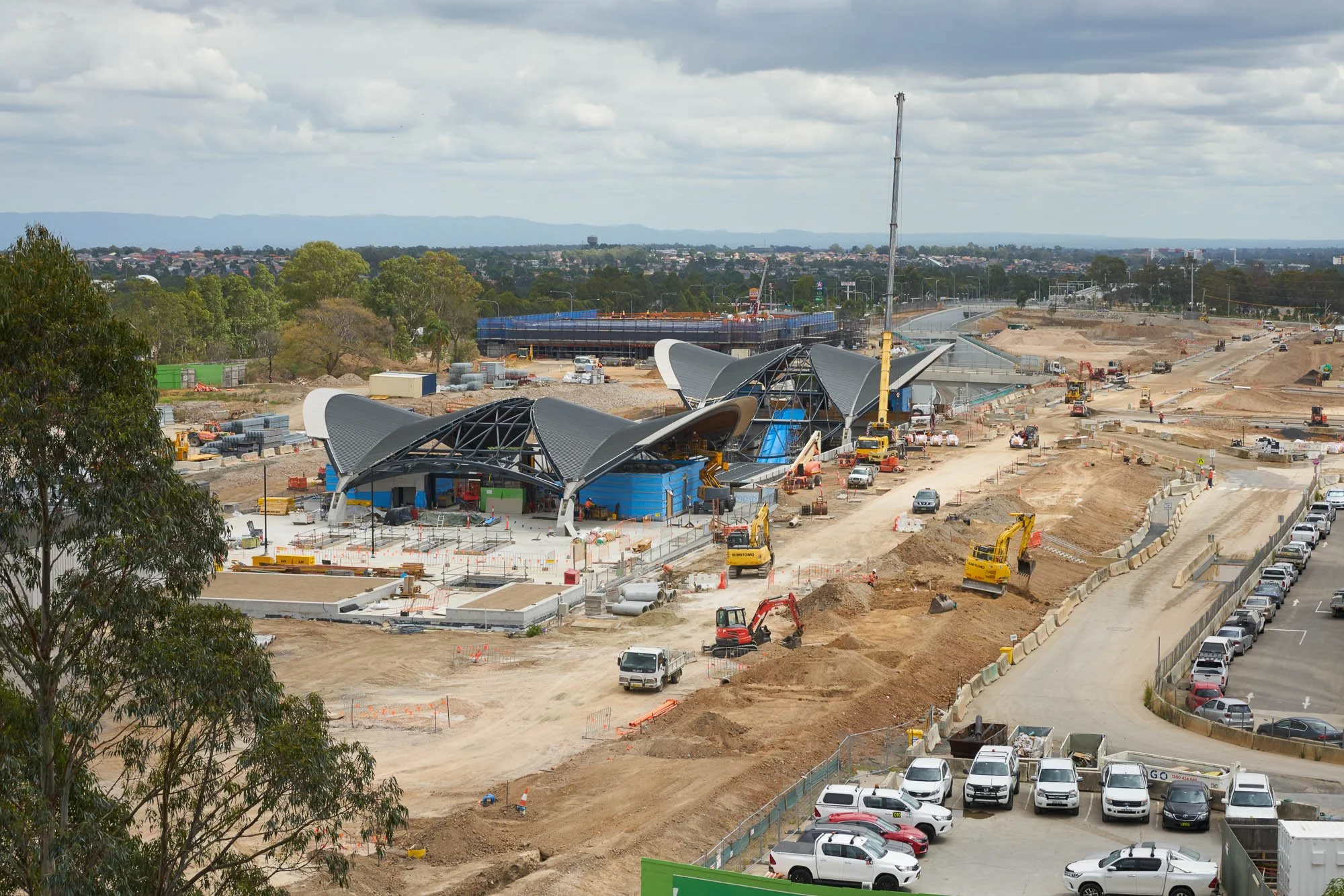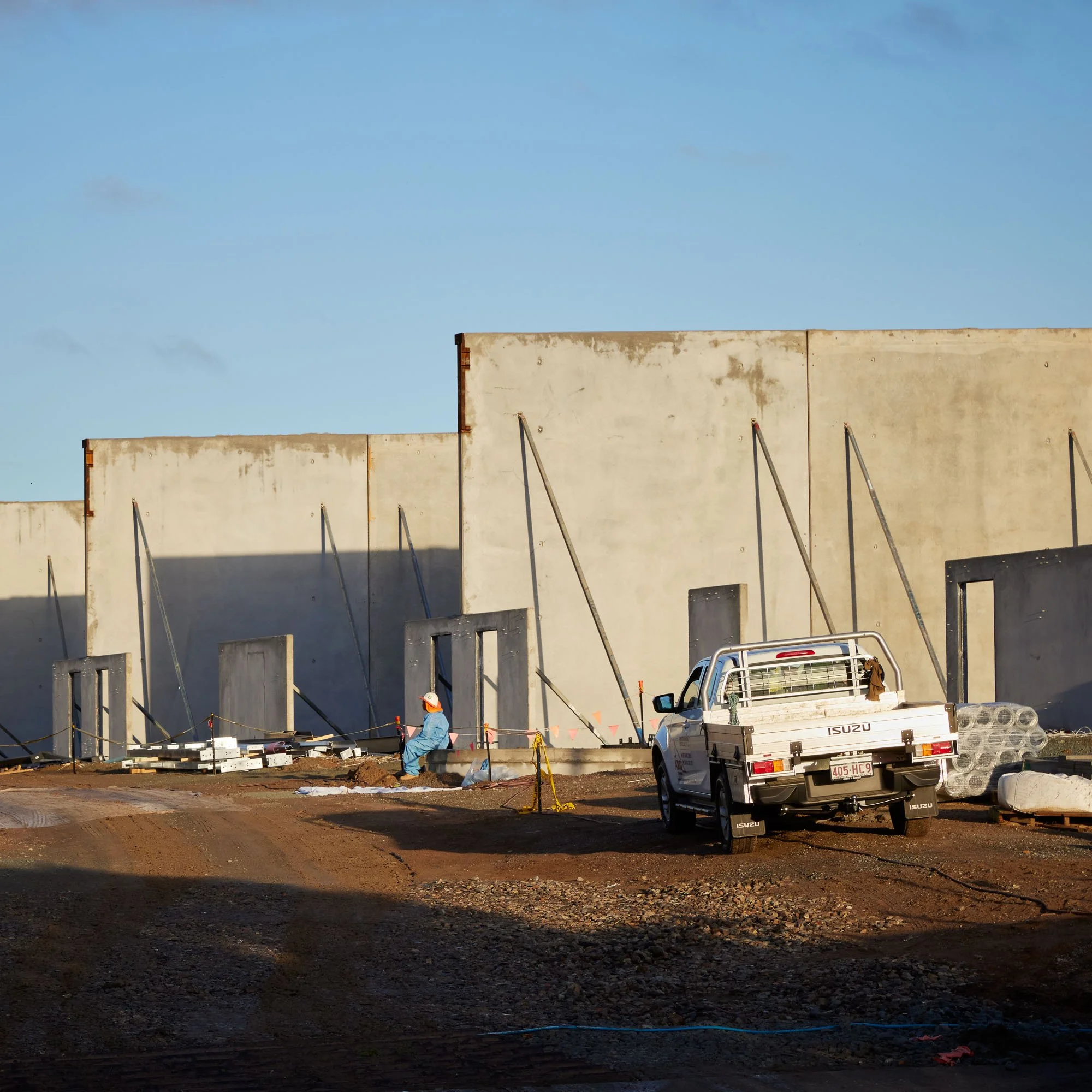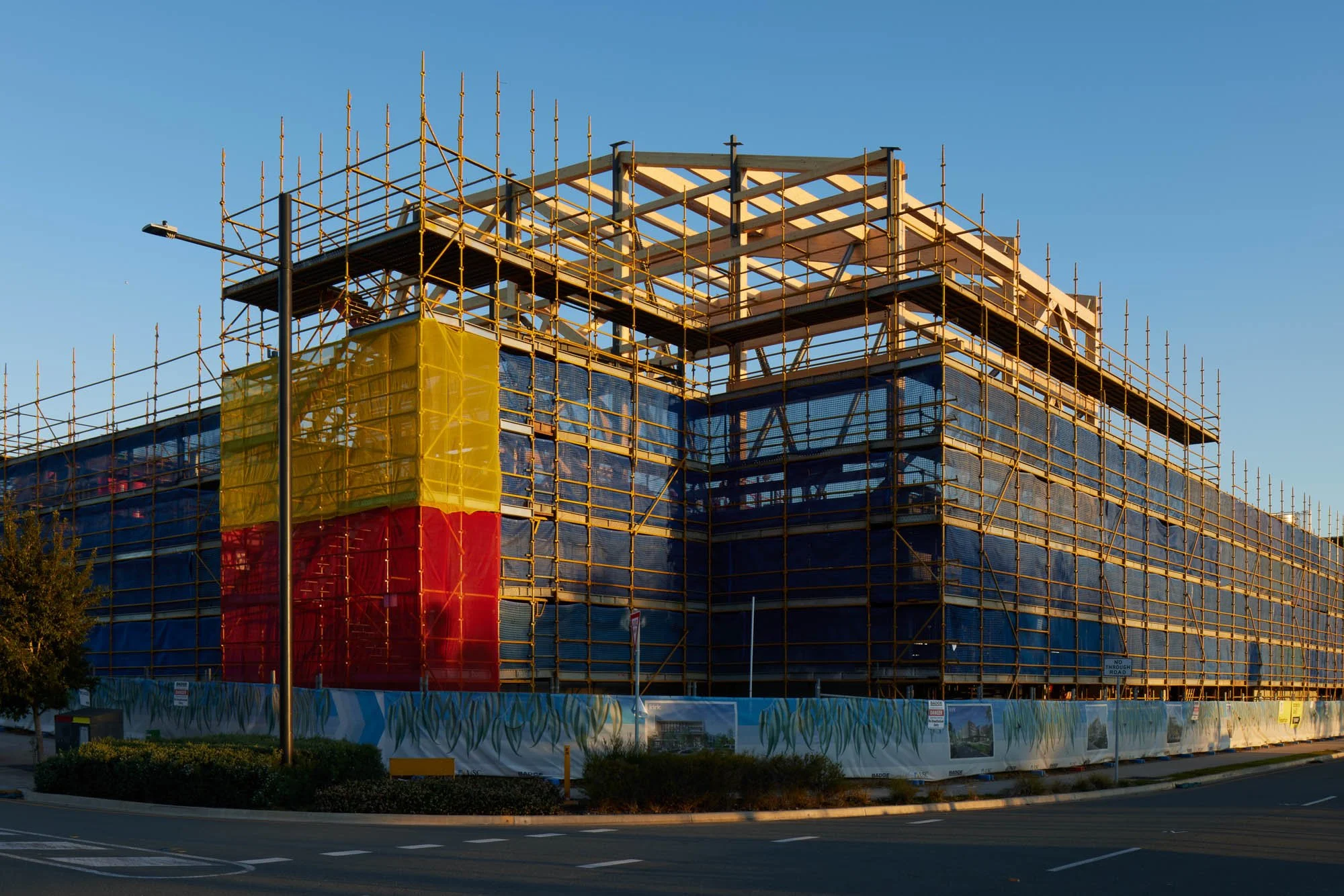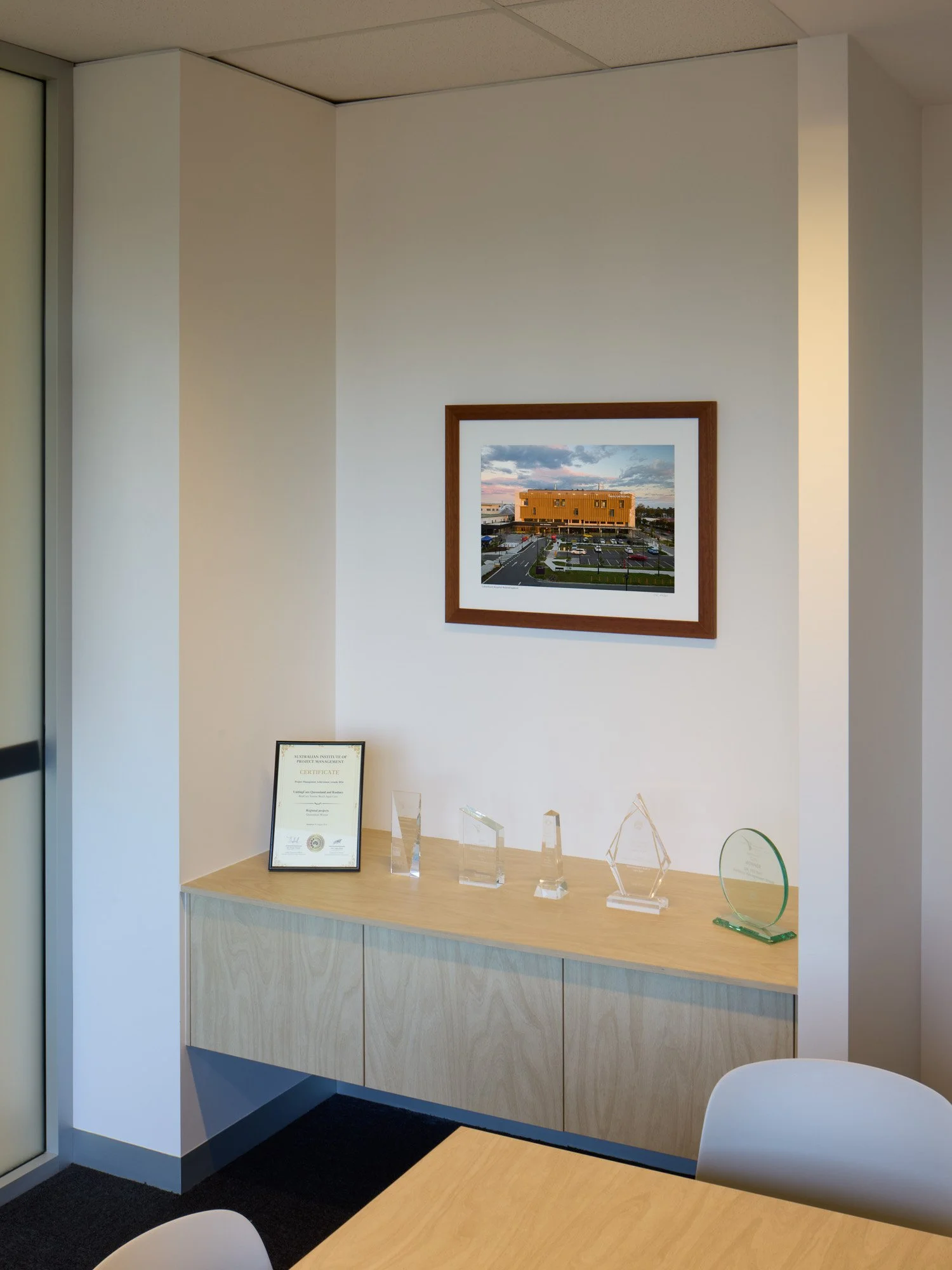Introduction
Imagine a world without photography—no cameras, no smartphone shots. Turning our focus to infrastructure projects, we’d be left with technical drawings, written reports, and artist impressions to understand what’s happening behind construction hoardings. Most of us would have to wait until a project is complete to truly grasp what it looks like and what it means for the people who use it.
Infrastructure projects are complex, involving a wide range of people: architects, designers, engineers, trades, project managers, community stakeholders, and investment decision-makers. Yet, most of these individuals—and certainly the broader public—never set foot on-site. Without good, clear visual documentation, how well can they understand the project's progress, scale, or impact?
This is where photography fits in. Good infrastructure photography is more than just capturing “pretty pictures”. It’s a powerful tool for supporting all aspects of project delivery through communication, and engagement. A well-made photograph can convey complexity, context, and even emotion in ways that reports or meetings simply can’t. We often hear “a picture is worth a thousand words”—but in infrastructure, it can be worth far more: trust, clarity, and connection.
In the sections below, I’ll explore the many roles photography plays in infrastructure projects—from project documentation and stakeholder communication to storytelling for community engagement. I’ll share examples from my own work to show how photography can make infrastructure not only seen but understood.
Communicating Scale, Complexity, and Progress
Good infrastructure photography is key to communicating the scale, complexity, and progress of construction projects.
Overview photos, especially top-down aerial views build upon the plan drawings from design and give stakeholders a clear sense of layout and scale that’s hard to grasp from the ground. These images help project stakeholders visualise how different elements (like roads, buildings, or structures) fit together on a large site.
Time-lapse photography adds another layer, capturing work through a camera fixed in place for the duration of the project, using hundreds of photos captured over weeks or months into a video to show progress, sequencing, and site activity over time. For example, a time-lapse of a bridge installation or building core rising can illustrate project momentum, coordination and sequencing of works.
Photography also captures the intricacies of staging, logistics, and temporary works—helping teams communicate the complexity of what’s happening behind the scenes. These visuals are not only informative but powerful tools for engaging both technical and non-technical audiences throughout the build.
Best suited type of photography: experienced infrastructure photographer.
Bella Vista Station - Overview photo during construction of Sydney Metro Northwest project
Project Management (Engineering and Construction)
Detailed site photography is a vital tool for engineers, contractors, and consultants, helping to provide clarity, accuracy, and efficiency across all phases of a project. By documenting technical details such as installation sequences, engineering details, and material conditions, photography provides a visual record that supports quality assurance, problem identification and troubleshooting. For example, a clear photo of reinforcing bar placement before a concrete pour can help verify compliance or identify an issue through the engineering hold or witness point process.
Photography also enables effective remote collaboration. Consultants or off-site engineers can assess site conditions, provide input, or make decisions sometimes even without needing to be physically present, saving time and resources. When photos capture issues like unexpected clashes or damage, teams can quickly troubleshoot and align on solutions.
Site photography supports projects thorough record-keeping. Capturing each stage of construction creates a visual timeline, useful for tracking progress, verifying work, and protecting against disputes or claims. A series of images showing a waterproofing installation, for instance, can help serve as proof of correct installation and compliance with specifications.
Ways in which photography can support project teams includes:
Documenting compliance to project requirements or technical standards
Inspection for Quality Assurance and Quality Control
Contractual/ Legal – Evidence for claims and disputes
Visual progress reports
As-Built Documentation
Visual Surveys. E.g. Drone images of mine rehabilitation/ material stockpiles
Best suited type of photography: Project team using iPhone or tablet, often directly through site reporting apps.
Wickham Terrace Reservoir - Progress shot showing works underway onsite
Enhancing Safety and Compliance
Photography plays a key role in documenting site safety, environmental compliance, and construction best practices. Clear, time-stamped images can verify that PPE is being used correctly, exclusion zones are in place, or sediment controls are functioning as designed. This visual evidence is invaluable for internal safety reviews, toolbox talks, or environmental audits.
For example, during a safety audit, photos of a correctly installed edge protection system or tagged scaffolding can confirm compliance without needing real-time inspection. Similarly, documenting spill response procedures or waste segregation helps demonstrate adherence to environmental regulations.
Images not only support accountability, they also help identify gaps and improve practices. A well-documented photo library becomes a reference for training, incident investigations, and continuous improvement. In fast-moving project sites with the potential for risk, photography ensures that the ‘what’ and ‘how’ of site activities, can be clearly seen and assessed.
The role of photography includes:
Supporting internal audits to demonstrate effective processes
Risk and issues management
Monitoring Environmental and Safety Protocols
Accident Documentation
Best suited type of photography: Project team using iPhone or tablet, often directly through site reporting apps.
Site photograph showing worker in PPE (Personal Protective Equipment) suitable for task
Project Communications (Stakeholder & Public Perception)
Photography is a powerful tool for communicating infrastructure projects to non-technical stakeholders like government agencies, investors, and the public. Clear, compelling visuals help translate complex work into something relatable, showing progress, scale, and community impact in a way words or drawings alone cannot. For example, high-quality photos of early works on a transport helped a government department show visible progress which the public simply couldn’t see, easing public concerns and helping improve community sentiment towards the project.
In updates to elected members, presentations to residents and the community, and media coverage, strong imagery adds credibility, helps community project features and changes, and makes key messages more engaging.
Good photography builds trust by making projects more transparent and human. Whether it’s a shot of local workers on-site, a new bridge taking shape, or environmental protection in action, the right image can turn a technical milestone into a story stakeholders can connect with.
Key benefits of photography for communications
Showcasing progress to stakeholders
Promoting the project including outcomes
Public Engagement
Communicate changes to public/customers
Best suited type of photography: experienced infrastructure photographer.
USC Building at Petrie Mill Development - Progress photo showing start of erection of Mass Engineered timber frame which was a key design element.
Marketing and Promoting Roles of Key Parties
Photography plays a key role in marketing and promoting the businesses involved in infrastructure projects. High-quality images showcase finished work in its best light, highlighting craftsmanship, innovation and the role of these key players. Photos help firms build their brand, stand out in future tenders, and attract new clients.
Whether used on websites, in capability statements, social media, or industry publications, strong photography demonstrates expertise and pride in delivery. For example, a construction company may use striking final shots of a completed rail station in a bid for a similar project, giving evaluators confidence in their experience and attention to detail on a project just like the one they are tendering for.
Photography tells a story of capability, collaboration, and success, positioning a business as a trusted and proven partner.
Role of photography for infrastructure project marketing
Documenting materials, products or design features
Images for bids and tendering – designers, architects, engineers, specialist project consultants, etc
Architectural award submissions
Promoting work of contractors and subcontractors
Best suited type of photography: experienced infrastructure photographer.
Image of civil earthworks contractor at work, suitable for marketing materials
Project Legacy/Archival
Photography plays a vital role in capturing a project’s legacy and creating a lasting visual archive.
Throughout construction, detailed images document key stages, materials, and covered or buried works (such as underground utilities or services behind walls), providing valuable ‘as-built’ information for future upgrades, extensions, or repairs. These records also support long-term maintenance and, eventually, safe deconstruction or demolition at the end of the asset’s life. When well captured and stored, photography ensures that future teams have the insight and context needed to manage the asset safely and efficiently over its full lifecycle. For example, photos taken before concrete pours or during cable installation can help locate critical infrastructure decades later, reducing risk.
Beyond practical use, this visual archive becomes part of the project's history, preserving the story of how the asset was built and the people involved.
Infrastructure projects are more than functional assets, they can become legacy elements that shape the identity of cities. Landmarks like the Sydney Harbour Bridge are not just engineering feats, they become cultural icons and lasting symbols of progress. Through photography, we preserve not only how these projects were built, but also their role in shaping the communities they serve for generations to come.
Role of photography for legacy and archival uses
Creating a historic record for archival purposes
Records to support future maintenance, and later safe deconstruction/ demolition at end of asset lifecycle.
As Built info to support future upgrades or extensions. E.g. underground utilities or hidden/covered works
Public interest – projects as landmarks that shape the identity of cities over time e.g. Sydney Harbour Bridge.
Best suited type of photography: experienced infrastructure photographer.
Kangaroo Point Green Bridge - Image from construction showing construction methodology with crane and temporary works in the Brisbane river
Artwork
Infrastructure photography can also transcend documentation and become a form of visual art. Striking images of construction sites, machinery, materials, or completed structures can be transformed into fine art prints that highlight the beauty, scale, and complexity of the built environment.
These artistic photographs can be used to create memorable gifts or memorabilia—such as framed prints for project staff, tokens of appreciation for clients, or commemorative pieces for contractors. They also serve well in coffee-table books or photo essays that tell the visual story of a project from concept to completion.
When thoughtfully composed and professionally presented, infrastructure photography can evoke pride, celebrate achievement, and turn technical work into something worthy of display. Whether displayed in an office, a boardroom, or gifted at a project handover, these images become lasting reminders of the teamwork, effort, and vision behind each build.
Examples of photography for art
Fine art prints showing details or abstract elements of design
Project gifts for project staff, clients or contractors
Coffee table books
Framed prints as lasting reminders of projects
Best suited type of photography: experienced infrastructure photographer.
RP Infrastructure - Bespoke framed print of Caboolture Hospital Redevelopment.







